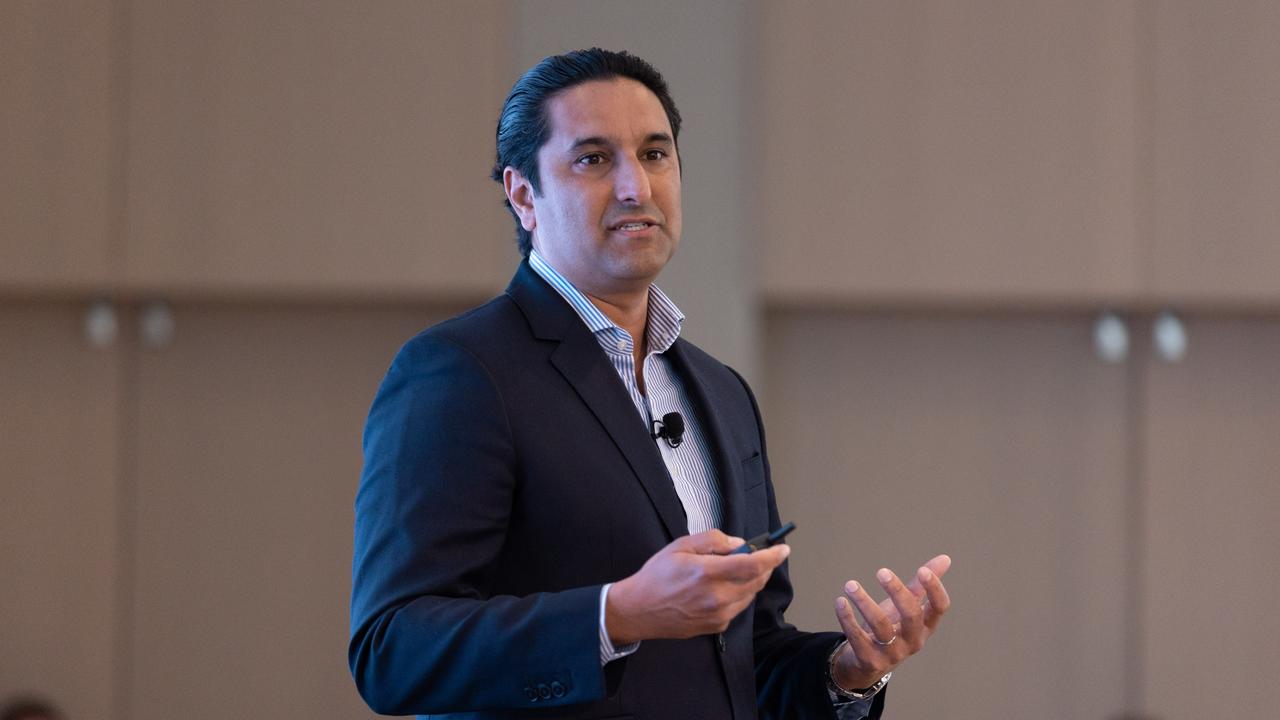Private credit operator Hamilton Lane bites back on risk threat
Despite interest rates staying higher for longer, private credit operator Hamilton Lane says the environment for defaults in the sector was ‘pretty benign’.

Business
Don't miss out on the headlines from Business. Followed categories will be added to My News.
The prudent selection of borrowers and diversifying exposures is central to avoiding issues of default or losses in burgeoning private credit markets, as regulators around the world more closely scrutinise the investments.
That’s the view of Nasdaq-listed Hamilton Lane’s global head of direct credit Nayef Perry, who said despite interest rates remaining higher for longer in markets including the US and Australia, the environment for defaults in private credit was “pretty benign”.
“Asset selection is really at the heart of preventing issues,” Mr Perry added.
His comments come amid rampant growth in private credit – spanning areas such as direct and non-bank lending – and as Hamilton Lane introduces its Senior Credit Opportunities Fund to Australia.
Hamilton Lane, which has more than $US940bn in assets under management and supervision, entered Australia in 2017. It also manages global secondary and credit-oriented funds and fund-of-funds. The company’s broader operations include direct equity, primary fund investments, buyouts and venture capital, co-investment funds and secondary private equity investments.
Consultants at McKinsey & Company have labelled the private credit market as “one of the fastest-growing segments” in the financial system over the past 15 years. The global asset class amounted to almost $US2 trillion ($2.9 trillion) by the end of 2023.
But the bumper growth in private credit and more challenging macroeconomic conditions in many parts of the world have stoked interest from central banks and regulators.
The Australian Securities & Investments Commission has repeatedly warned this year it is concerned about inaccurate asset valuations and lack of transparency in private market investments.
Britain’s Financial Conduct Authority launched a review of private markets valuations in 2024, after the Bank of England outlined increased challenges ahead for the non-bank sector and private credit markets.
A US Federal Reserve research paper early this year cautioned of relatively low recovery rates for private credit loans upon default, compared to other areas such as syndicated loans.
Mr Perry said Hamilton Lane had a default rate of zero when it came to first claims on collateral, across its stable of Senior Credit Opportunities funds. The strategy was launched in late 2022.
It targets what it calls “historically recession-resilient sectors” and focuses on senior-secured private credit. Senior credit typically sits higher in a borrowing company’s capital structure, meaning it is more likely to be repaid.
“Places that we avoid tend to be more cyclical, industries such as energy, retail and on the whole industries that tend to be very capex-intensive, where the capital expenditure or the free cashflow gets consumed by capital expenditure, as opposed to being available for debt service,” Mr Perry said.
“The areas that we tend to lean into, they tend to be ... in more recession-resilient areas where demand drivers don’t tend to oscillate during periods of market dislocation. So as an example, if we do an investment in a healthcare business, we may be in a medical device business.”
Hamilton Lane’s Senior Credit Opportunities fund is available globally, with feeder funds operating in markets including Canada and Europe. It is targeted at sophisticated and advised investors and draws on a range of managers.
Mr Perry, who recently visited Australia, said investors in this market were interested in private credit, but also asking about the outlook for potential defaults.
“Bank regulation has been a big driver of the success of private credit in markets like the US. Australia is arguably less de-banked than the US market,” he said.
“One of the things that investors were asking questions around is why is it that private credit commands that premium?
“Our response was, and continues to be, that it’s an asset class that offers a number of benefits ... the ability to stay open through up and down markets, where the banks tend to go offline during periods of dislocation.”
On defaults, Mr Perry said: “In markets like the US, which make up the majority of where we invest (these funds), households and companies have generally been pretty healthy through this period.”
The Australian Prudential Regulatory Authority told banks in September it was likely to recommend they stop issuing hybrid securities by 2032, noting their popularity with retirees posed a danger to the broader banking system. Hybrid securities are issued by banks to raise capital and have the characteristics of both debt and equity.
Hamilton Lane’s private wealth Australia boss Scott Thomas said many Australian investors were assessing that decision.
“With APRA the phasing out of additional tier one or AT1 capital over the course the next few years, a number of those high net worth groups that have used AT1 as an income source or an income option for their client portfolios are starting to look at alternatives around private credit,” he added.
The Senior Credit Opportunities Fund allows monthly subscriptions and has regular liquidity. The lack of liquidity in private credit is often a criticism of the investments.
The International Monetary Fund report in April cautioned about liquidity risks and also noted private credit borrowers tended to be riskier than their traded counterparts.
Hamilton Lane’s Senior Credit Opportunities Fund received a recommended rating by Zenith Investment Partners. The fund has a 1.25 per cent management fee, but does not levy a performance fee. The product disclosure statement outlines that other costs – including fees and charges – are levied at 0.85 per cent per annum.
Originally published as Private credit operator Hamilton Lane bites back on risk threat








